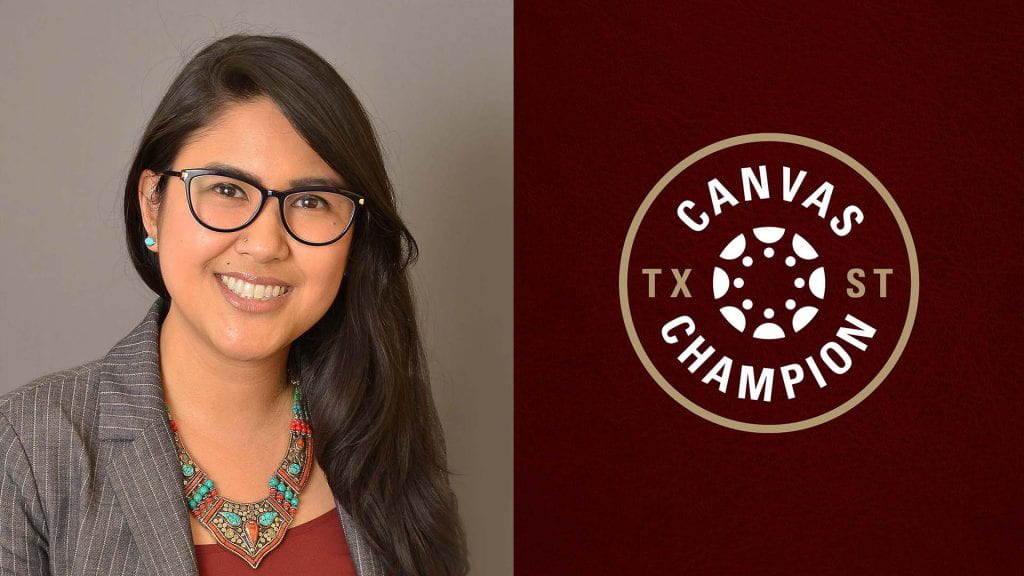“Her new middle name is Canvas” – Valerie Gomez’ colleagues
Valerie Gomez wanted to learn all she could about TXST Canvas. She quickly become an expert in the university’s new learning management system. True to being a Canvas Champion, she eagerly shares her insights and experiences with others.
Gomez, an instructor in the Department of Social Work, works with students in the field through internships. While working in Canvas she found many user-friendly tools that allowed her to accomplish what she needed to work and communicate with her students.
“The Canvas app has much more capacity, so with students’ increased use, I am more intentional about the user experience,” Gomez said.
Prior to posting a module or important course content, she uses the student view in the browser and the Canvas student app.
“Then, I assess if my content is equivalent and as intended on a small screen or device to determine if a note should be included to view on a computer screen at a later time, or if the information needs to be modified,” she said.
Gomez said taking the user experience into consideration helps a course be more enjoyable.
Like so many Canvas Champions who are eager to learn about Canvas, Gomez really likes that there are tools in the new learning management system that are easier and are more intuitive than the outgoing system. Those tools include SpeedGrader, which allows her to easily review, grade, and provide prompt feedback. The audio and video responses and feedback makes online meetings, announcements, discussions, and grading easy. And using Zoom in the navigation makes it convenient when meeting invitations are sent out – users know how to join and do not experience login issues. This makes for a smooth experience for Gomez and her students.
“Canvas makes it very convenient to record directly in the system, and students can still “see” me on an ongoing basis,” Gomez said. “I have received feedback that the videos are helpful and appreciated.”
Gomez said she plans to continue learning and will use Canvas for future pedagogy of social work education, including field application and internship matching, field orientation training, and weekly faculty-student meetings. Additional upcoming projects include the Social Justice Committee Resource Guide, resources, streamlined communication, and field instructor work with external partners and interns to provide on-boarding modules.
Canvas can do many things, which has made working in the system a good experience for Gomez.
“I enjoy Canvas so much that I keep finding ways to use the project sites in my everyday work,” she said. “It is easy to use, aesthetically pleasing, and the Canvas Community resources answer every question, many with screen shots!”
With all Gomez learned, her courses and students were covered, but her colleagues still had questions. Her vast knowledge quickly made her the expert for Canvas-related questions in her department. Her peers would ask questions like how to develop an online experience to match the in-person experience and how to replicate something used in the old system in the new system.
“This was an opportunity to share what was comparable in Canvas or a recommended tool,” Gomez said. “People quickly started to see how user friendly it was for faculty and students. I have been the go-to person with my field faculty colleagues on how to maximize Canvas. My colleagues even joked that Canvas is my new middle name because I talk about it so much.”
Valerie Gomez, Master of Social Work field coordinator and lecturer and Canvas Champion, believes there are tools in Canvas to accomplish many necessary tasks and that make things easier and more accessible for students and faculty. She suggests taking some time to learn the new tools. You may be surprised to find comparable or even better tools for what you need to accomplish.
Rebecca Ormsby is a communications specialist in the IT Marketing and Communications office.


